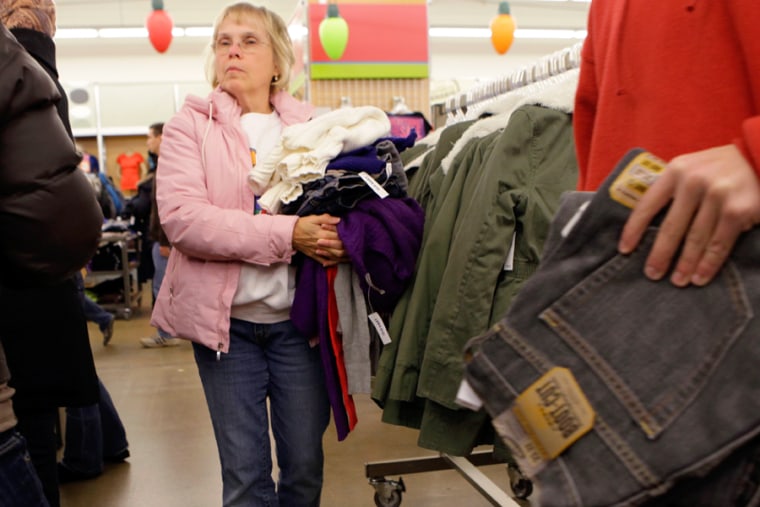Americans don’t shop the way they used to. It’s not only that they’re going to the mall less often. Consumers in this post-recession era are also less likely to stick around and browse after they walk into a store. Marketing pros say that shoppers tend to come armed with oodles of Web research on brands and prices. They buy, then leave. No browsing. No impulse buys.
The industry calls them “mission shoppers.” Such consumers visit fewer stores per trip — three, vs. five before the recession, according to research firm ShopperTrak. That means retailers need to “get more out of every person that walks through the door,” says David Maddocks, a former chief marketing officer for Nike’s Converse brand who now runs a consulting firm.
As retailers have improved the e-commerce experience in recent years, they haven’t invested in their stores, pushing an increasing number of shoppers online. “While e-commerce has been getting better, the stores have been getting worse,” says Ron Boire, chief executive officer of electronics retailer Brookstone. “A lot of retailers pulled a ton of labor off the floor in ’08 and ’09, and now they are figuring out how to put it back in.”
Businessweek: Why americans won't do dirty jobs
Gap’s Old Navy is using more greeters at its stores. Lowe’s is arming its floorwalkers with iPhones so they can instantly check inventory and make suggestions if a certain item is unavailable. Foot Locker trains associates to ditch the traditional “how may I help you?” for “What kind of shoe are you looking for?” It’s a subtle change that’s more likely to start a conversation, says CEO Ken Hicks.
Retailers are also reconfiguring stores to encourage browsing. Old Navy has remodeled about a third of its 1,000 stores, installing a “racetrack” layout to compel shoppers to circumnavigate the store and see more merchandise. The revamped outlets feature wider aisles to accommodate the strollers pushed by Old Navy’s target customer — thirtysomething moms. Shelves and displays are lower so shoppers need look no higher than 10 feet. And they no longer have to trek to the back of the store to try on clothes; in the redone stores, the changing rooms are in the middle, and there are “quick fit pods” for speedy try-ons.
Old Navy has boosted impulse buys at checkout, too, by stocking shelves near its registers with such Gen X favorites as Mad Libs books and superhero lunch boxes. The result of all the changes: Shoppers at the remodeled stores are spending $2 more per visit, according to Gap, helping turn Old Navy into the company’s best-performing unit.
Businessweek: The end of Borders and the future of books
Other stores are taking a page from Nordstrom, which has long grouped merchandise in lifestyle categories to encourage shoppers to purchase entire outfits rather than single articles of clothing. Body Central, a Jacksonville, Fla.-based apparel chain aimed at 18- to 35-year-old women, now organizes its clothing into such categories as “club” (evening wear) and “casual” (weekend wear). Over the past 12 months sales at the publicly traded company were up 22 percent. Body Central also has upgraded window displays and installed laptops that play hit music. “There’s a plethora of information out there and more choices for the customers, and that puts pressure on execution,” says CEO Allen Weinstein. “We’ve taken it up a notch.”
As retailers upgrade stores, they’re also cognizant of making the shopping experience more Web-like. Teen clothier Pacific Sunwear equips salespeople with iPads so they can create outfits for customers and place orders for out-of-stock items. That’s improved sales, because “we have 18-year-old guys selling to 18-year-old girls and (the clerks) don’t necessarily know what they want,” says Bill Bieluch, director of IT projects at the chain.
Brookstone couldn’t add Wi-Fi and iPads to its 300 stores fast enough, says Boire. The devices are being used to demonstrate pricey toys such as helicopters and robots that can be controlled using a mobile app. The tablets are also handy when staffers want to pitch items available online but not in stores. Next, Boire wants handheld checkout devices like the ones Apple uses in its stores. He’s been racing ahead because he’s worried that improvements in e-commerce will accelerate consumers’ migration to the Web. And then the mission shopper will become a permanent fixture, rather than a recession-induced phenomenon.
The bottom line: Retailers are tweaking stores to lure Web-savvy mission shoppers. Old Navy makes $2 more per customer in its revamped outlets.
